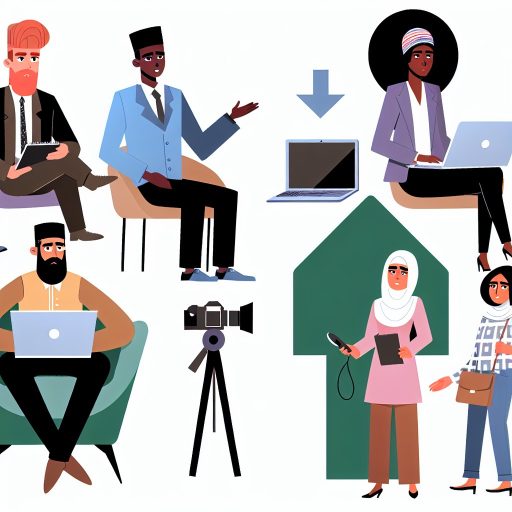Introduction
Themed events captivate and inspire guests.
Creative planning sets the stage for unforgettable experiences.
Engaging themes foster connection and spark excitement among attendees.
When you plan creatively, you offer guests a chance to immerse themselves in the theme.
This immersion enhances their overall experience.
They feel more involved, contributing to a vibrant atmosphere.
The right theme transforms a simple gathering into a memorable celebration.
It adds depth and personality, making your event stand out.
Guests remember not just the event, but the feelings it evoked.
Creative planning connects ideas and elements in surprising ways.
Original concepts generate discussions and laughter, igniting shared memories.
You encourage guests to engage by integrating activities that foster participation.
As we explore themed event planning, we aim to unlock creative potential.
This post provides practical tips for executing successful, imaginative events.
Discover how to elevate your next gathering with thoughtful planning strategies.
Incorporating unique details, such as decor, attire, and menu, amplifies the theme’s impact.
Even small touches can transform the ambiance and set expectations.
Consider interactive elements that invite guests to contribute to the theme.
Lastly, remember the power of storytelling.
Craft a narrative that resonates with your theme.
Transform Your Career Today
Unlock a personalized career strategy that drives real results. Get tailored advice and a roadmap designed just for you.
Start NowBy creating a journey, you engage guests emotionally, making the event meaningful.
Understanding Your Audience
Planning a themed event successfully starts with understanding your audience.
Knowing your target demographic will shape every decision you make.
It can influence the theme, the activities, and the marketing strategies.
Here are several reasons why understanding your audience is essential.
Importance of Knowing Your Target Demographic
- Tailored Experience: When you understand your audience, you can create a tailored experience. Customizing your event to the interests of your guests ensures higher satisfaction.
- Informed Decision Making: Identifying demographics helps in making informed decisions about logistics. Knowing who will attend influences your choice of venue, catering, and entertainment.
- Effective Marketing: Awareness of your target demographic guides your marketing efforts. Tailored messaging and channels resonate better with specific audience types.
- Budget Allocation: Understanding potential attendees enables better budget allocation. You can prioritize spending on elements that matter most to your audience.
- Stronger Community Engagement: Engaging with your audience fosters a sense of belonging. This connection creates a loyal community that supports your future events.
Techniques for Gathering Audience Insights
Gathering insights about your audience requires specific techniques.
Each method provides valuable data that can guide your event planning.
The following are effective techniques to consider:
- Surveys: Conduct surveys before the event. Use online tools, like SurveyMonkey or Google Forms, to keep it accessible and straightforward.
- Social Media Polls: Utilize your social media platforms to gauge interest. Simple polls can provide immediate feedback on potential themes and activities.
- Feedback from Past Events: Analyze feedback from previous events. Look for patterns in comments regarding what attendees enjoyed and what they would like to see improved.
- Focus Groups: Organize small focus groups with representative audience members. Discuss potential themes and activities to gather deeper insights.
- Market Research: Conduct general market research to understand industry trends. Reports and studies can illuminate what themes are gaining popularity.
Examples of How Understanding Audience Interests Can Shape Theme Selection
Your understanding of audience interests significantly influences the theme selection process.
Here are several examples of how this knowledge can drive your theme choices:
- Corporate Events: If your audience includes professionals from the tech industry, consider a futuristic tech theme. Highlight innovations with engaging demonstrations.
- Family-Friendly Events: For a family audience, opt for a carnival or circus theme. Incorporate games, face painting, and family activities that appeal to all ages.
- Cultural Events: If you’re targeting a culturally diverse audience, consider themes reflecting various cultures. Include food, music, and performances representative of different backgrounds.
- Seasonal Themes: For a winter event, capitalize on festive themes. A holiday market or winter wonderland can attract audiences eager for seasonal celebrations.
- Health and Wellness Events: If your audience is focused on health, consider a wellness theme. Feature workshops on mindfulness, yoga sessions, and healthy catering options.
Understanding your audience helps you connect on a deeper level.
It allows you to anticipate their needs and preferences.
By prioritizing their insights, you craft an event that feels personalized and meaningful.
Your guests will remember the experience and cherish the memory of a well-planned themed event.
As you embark on your planning journey, remember that your audience is central to your success.
Employ the techniques discussed to gather insights and stay attuned to their interests.
Involve your audience in the planning process whenever possible, making them feel included.
The result will be a more engaging, enjoyable, and memorable event.
Ultimately, understanding your audience goes beyond mere demographics.
It encompasses their preferences, lifestyle, and aspirations.
Transform Your Career Today
Unlock a personalized career strategy that drives real results. Get tailored advice and a roadmap designed just for you.
Start NowBy embracing this comprehensive approach, you create a theme that resonates deeply.
As a result, your event will not only meet expectations but also exceed them.
Choosing a Unique Theme
Choosing a unique theme for your event sets the stage for creativity and memorability.
A well-chosen theme can elevate an ordinary gathering into an extraordinary experience.
Creativity begins with brainstorming techniques that help generate fresh themes.
Brainstorming Techniques for Theme Generation
When planning a themed event, effective brainstorming techniques can spark ideas and generate unique themes.
Here are two powerful methods:
- Mind Mapping: Create a visual representation of your thoughts.
Write your main idea in the center and branch out with related concepts.
This approach helps uncover connections that you would not have thought of otherwise. - Keyword Association: Start with a keyword related to your event.
Write down any words that come to mind when you think of that keyword.
This exercise can lead to unexpected themes and inspirations.
Consider gathering your team for a collaborative brainstorming session.
Encourage everyone to share their ideas without judgment.
Often, the best themes come from playful discussions and creativity.
Analysis of Popular Themes
Researching popular themes can provide inspiration for your event.
However, do not simply copy these themes. Put a unique spin on them.
Here is how you can practice this analysis effectively:
- Popular Movie Themes: Instead of welcoming guests with typical movie experiences, consider a “Behind the Scenes” theme.
Guests can engage in storytelling sessions inspired by their favorite films. - Cultural Events: Host a traditional festival but innovate by highlighting lesser-known cultures or subcultures.
Explore fusion cuisines or unique art forms to create a diverse atmosphere. - Outdoor Adventures: Instead of a regular camping theme, design a “Back to Nature” experience.
Incorporate eco-friendly practices or conservation workshops to promote environmental awareness.
Analyzing themes can provide insights into what resonates with your audience.
Consider your audience’s interests when creating variations on popular themes.
Your unique twist will make your event stand out.
Case Studies of Successful Themed Events
Taking inspiration from successful themed events can refine your planning process.
Here are some notable examples and the innovative themes they embraced:
- The Great Gatsby Party: An extravagant 1920s-inspired event featuring jazz music and flapper attire.
Guests participated in vintage games and enjoyed Prohibition-era cocktails.
This theme gained popularity through its elaborate decorations and immersive atmosphere. - Masquerade Balls: These events evoke mystery and glamour.
Attendees dress in opulent costumes and masks, creating an air of secrecy.
Organizers often add interactive elements such as live performances, enhancing the overall experience. - Interactive Art Experiences: An event that transforms ordinary spaces into interactive art galleries.
Artists create installations that invite guest participation.
This theme combines creativity and collaboration, engaging guests in innovative ways for a memorable experience.
Each of these case studies showcases how a unique theme can create memorable experiences.
You can learn from their successes and pitfalls.
Transform Your Career Today
Unlock a personalized career strategy that drives real results. Get tailored advice and a roadmap designed just for you.
Start NowAim to combine elements that resonate with your audience while ensuring they evoke curiosity and excitement.
Now that you have generated ideas, refined them, and learned from successful case studies, it is time to solidify your theme.
Here is how to ensure your theme evolves into a comprehensive plan.
From Theme to Execution
After choosing your unique theme, the next step is to immerse your planning team in executing it.
Your theme should permeate every aspect of the event.
Here is a plan to help you run with your chosen theme effectively.
Incorporating the Theme into Every Detail
Your chosen theme must reflect in all elements of the event.
Consider these areas where you can incorporate your theme:
- Invitations: Design invitations that align with your theme.
Use colors, fonts, and imagery that reflect the theme clearly. - Decorations: Use visual elements that embody your theme creatively.
From banners to table settings, ensure every detail reflects your concept. - Food and Beverage: Serve dishes and drinks that relate to your theme.
This addition excites guests and enhances their experience. - Entertainment: Choose activities and performances that fit your theme.
Consider hiring performers or planning games that resonate with your chosen concept. - Dress Code: Encourage attendees to dress according to your theme.
This increases engagement and creates a sense of cohesion among guests.
Engaging Attendees with Interactive Elements
Incorporating interactive elements adds depth to your themed event.
Engaging guests actively creates a more memorable experience.
Here are some ideas:
- Workshops: Organize workshops related to your theme.
For example, a “Flower Power” theme could include flower arrangement classes. - Photo Booths: Create themed photo backdrops where guests can capture memories.
Provide props that match your theme for fun pictures. - Games and Challenges: Develop games that require participation.
Consider scavenger hunts that incorporate elements from the theme.
By providing opportunities for guest interaction, you ensure that attendees remember your event fondly.
A unique theme coupled with interactive features leaves a lasting impression.
Gathering Feedback and Reflection Post-Event
Once your event wraps up, gather feedback.
This feedback is invaluable for future planning.
Here is how you can collect insights from your guests:
- Surveys: Distribute surveys to gauge guest satisfaction.
Ask what they enjoyed and what could be improved. - Social Media Engagement: Monitor social media engagements.
Guests may post about their experiences, providing insights into their thoughts. - Debrief Meetings: Hold a post-event meeting with your planning team.
Discuss which aspects worked well and what could be enhanced for future events.
Gathering feedback allows you to continuously improve your themed events.
Each new event becomes an opportunity to build upon past successes.
See Related Content: Impact of VR and AR on Multimedia Art
Creative Concept Development
Planning a themed event requires a strong and cohesive concept.
Transform Your Career Today
Unlock a personalized career strategy that drives real results. Get tailored advice and a roadmap designed just for you.
Start NowYour concept serves as the backbone of the entire event.
It allows you to create an engaging atmosphere that captivates your guests.
Several elements contribute to a cohesive event concept.
- Color Schemes: Choose colors that resonate with your theme.
- Decor Styles: Select decor items that enhance the event experience.
- Layouts: Design a layout that encourages interaction among guests.
Color Schemes
Colors evoke emotional responses and set the mood.
Therefore, selecting the right color scheme is crucial.
Consider your theme’s essence and message when choosing your colors.
You want to ensure the colors work harmoniously together.
For instance, a “Winter Wonderland” theme may involve icy blues and whites.
Whereas a “Tropical Paradise” theme might incorporate vibrant greens and yellows.
Use colors to guide your guests’ experience.
You can apply your chosen colors to various elements:
- Invitations
- Table settings
- Centerpieces
- Lighting
When all elements align with your color scheme, you create a visually appealing event.
This event pulls guests into your chosen narrative.
Decor Styles
Your decor should not only reflect your theme but also enhance it.
Choose decorations that tell a story.
They should ignite guests’ imaginations and create a memorable atmosphere.
For a “Roaring Twenties” themed party, consider art deco motifs, feather centerpieces, and vintage music.
These items reinforce the theme and immerse guests in the era.
Consider using various decor styles to add depth:
- Lighting: Use fairy lights, candles, and spotlights to create ambiance.
- Table Decor: Choose table runners, charger plates, and unique glassware that echo your theme.
- Backdrops: Create photo-worthy backdrops that enhance the event experience.
- Props: Incorporate thematic props that guests can engage with.
These decor elements blend the theme into a tangible experience.
Transform Your Career Today
Unlock a personalized career strategy that drives real results. Get tailored advice and a roadmap designed just for you.
Start NowGuests will feel the connection to the concept throughout your event.
Layouts
Your venue layout plays a critical role in the guest experience.
An effective layout fosters interaction and comfort.
Think about how guests will move through the space.
Consider areas for mingling, dining, and entertainment.
Each area should align with your theme and concept.
When conceptualizing your layout, consider the following:
- Flow: Ensure a logical flow from one area to another.
- Seating Arrangements: Choose arrangements that encourage conversation.
- Activity Zones: Designate areas for activities or entertainment that fit your theme.
- Accessibility: Make sure all spaces are easy to navigate.
By carefully planning your layout, you can create a dynamic space.
This space offers a seamless experience for attendees.
The Role of Storytelling in Theme Development
Storytelling is essential when developing your event theme.
A compelling narrative draws guests in and captivates their imaginations.
By weaving a story into your event, you create emotional connections.
This helps guests become engaged participants rather than passive spectators.
To incorporate storytelling into your event, start with a clear theme.
Then, consider how to craft a narrative around it.
Think about these elements:
- Character Development: Introduce characters that fit your theme and integrate them into the event.
- Plot Points: Include specific moments that surprise or delight guests throughout the night.
- Conflict and Resolution: Build tension or excitement that resolves as the event progresses.
Using these elements, you create a multi-dimensional experience.
Guests will have the opportunity to engage and interpret the narrative.
Ways to Integrate Narrative Elements into Your Event Atmosphere
Integrating narrative elements into your event does not have to be complicated.
Simple ideas can significantly impact how guests experience the theme.
Transform Your Career Today
Unlock a personalized career strategy that drives real results. Get tailored advice and a roadmap designed just for you.
Start NowConsider these examples to incorporate storytelling effectively:
- Immersive Experiences: Create immersive spaces that lead guests through different sections of your story.
- Interactive Stations: Set up stations where guests can participate in themed activities, enhancing the narrative.
- Live Performances: Hire actors or entertainers to perform scenes related to your theme.
- Thematic Favors: Gift guests with party favors that tie into the story and give them a piece of the experience.
These ideas transform your event from ordinary to extraordinary.
They allow guests to connect with the theme on a deeper level.
Creating a cohesive event concept involves careful planning and creativity.
Use color schemes, decor styles, and layouts to set the scene.
Do not forget the power of storytelling.
Integrate narrative elements that enhance the atmosphere and engage your guests.
A well-executed idea makes for a memorable event guests will talk about long after it ends.
Embrace your creativity and let it guide you through the planning process.
Gain More Insights: Podcast Producer Salary and Job Outlook
Choosing the right venue can significantly enhance the overall impact of your themed event.
It sets the stage and tone.
It invites guests to immerse themselves in the experience.
This section explores innovative venue selection.
It offers insights on unconventional venues and tips for transforming simple spaces.
Enhancing the Theme Through Venue Choice
When planning a themed event, the venue plays a crucial role.
The venue not only accommodates guests but also complements the theme.
Here are some considerations in choosing the best venue:
- Alignment with Theme: Choose a venue that aligns with the theme.
- Capacity and Layout: Ensure the venue accommodates your guest list without feeling overcrowded.
- Location: Consider accessibility for guests.
- Ambiance: The venue’s natural ambiance can enhance the theme.
Unconventional venues often provide unique experiences that traditional spaces cannot replicate.
An eclectic venue can invigorate your event.
Transform Your Career Today
Unlock a personalized career strategy that drives real results. Get tailored advice and a roadmap designed just for you.
Start NowThis makes the event memorable and engaging.
Unconventional Venues Versus Traditional Spaces
Traditional event spaces, like banquet halls, offer familiarity and convenience.
However, unconventional venues can elevate a themed event.
Consider the following unconventional options:
- Museums: Museums can add an educational twist to theme parties.
- Warehouses: Utilize a warehouse for a modern, industrial feel.
- Parks: Outdoor parks provide a natural backdrop.
- Art Studios: An art studio invites creativity.
- Historic Sites: A historic location evokes nostalgia.
These unconventional spaces can surprise and delight your guests.
They create lasting memories.
However, transforming a conventional setting can also yield impressive results.
Strategies for Transforming a Simple Venue
If your chosen venue is quite conventional, you still have options to enhance its thematic appeal.
Here are some strategies:
- Creative Decor: Invest in decor that aligns with your theme.
- Customized Signage: Use themed signage throughout the venue.
- Interactive Stations: Create interactive areas, such as craft stations.
- Themed Food and Drink: Coordinate your catering with the theme.
- Ambient Lighting: Use creative lighting to set the mood.
By applying these tips, you can turn a conventional venue into a mysterious speakeasy or a whimsical wonderland.
The result is an immersive experience that captivates guests.
Examples of Successful Event Venues
Case studies underscore the impact of creative venue selection on event success.
Here are examples of events that benefited from unique venue choices:
Outdoor Summer Festival
A community chose a local park for their summer festival.
They arranged games, food trucks, and live music.
This venue allowed a relaxed, outdoor atmosphere.
It promoted engagement among attendees.
Guests enjoyed nature while relishing summer vibes.
Industrial-Themed Wedding
A couple selected a warehouse for their wedding venue.
They embraced raw aesthetics, featuring exposed bricks and steel beams.
Transform Your Career Today
Unlock a personalized career strategy that drives real results. Get tailored advice and a roadmap designed just for you.
Start NowThe decor included string lights, rustic furniture, and bold color palettes.
Guests praised the unique ambiance and modern twist on love celebrations.
Art Gala in a Gallery
An art organization hosted a fundraising gala in a local art gallery.
They featured live auction pieces created by local artists.
The space showcased incredible artwork surrounding attendees.
This created an inspiring atmosphere.
Guests appreciated the opportunity to support local talent while enjoying artistic surroundings.
Benefits of Innovative Venue Selection for Themed Events
Innovative venue selection significantly enhances themed events.
An unconventional venue can create a remarkable experience.
Strategic decorating can transform a simple space.
Aligning the venue with your theme turns ordinary gatherings into extraordinary events.
When planning your next themed event, embrace creativity in venue selection.
You will see the magic unfold.
You Might Also Like: Portfolio Review Tips for Aspiring Art Directors
Engaging Activities and Entertainment
Themed events thrive on creativity.
They offer immersive experiences and active participation.
To elevate your event, choose engaging activities that resonate with the theme.
This can transform an ordinary gathering into a memorable celebration.
Here are several ideas for themed activities.
These come with suggestions for entertainment that aligns perfectly with your concept.
Transform Your Career Today
Unlock a personalized career strategy that drives real results. Get tailored advice and a roadmap designed just for you.
Start NowIdeas for Themed Activities
Incorporating unique activities enhances guest engagement and enjoyment.
Here are some exciting ideas:
- Costume Contests: Encourage guests to dress according to the theme.
- Interactive Craft Stations: Set up DIY stations where guests can create themed crafts, such as ornaments or decorations.
- Photo Booths: Design a photo booth with props that fit the theme.
- Themed Trivia: Organize a trivia game based on the theme.
- Scavenger Hunts: Create scavenger hunts throughout the venue.
- Cooking or Mixology Classes: Host classes teaching guests to prepare theme-aligned dishes or drinks.
- Interactive Games: Set up board or video games related to your theme.
Selecting Entertainment that Aligns with the Theme
Choosing the right entertainment is crucial for a cohesive experience.
Here are some tips for selecting engaging entertainment:
- Check Availability: Research potential performers or entertainers.
- Evaluate Style: Consider the style of entertainment to ensure it matches the theme and atmosphere.
- Read Reviews: Look for feedback from previous clients to gauge reliability and quality.
- Budget Considerations: Align entertainment choices with your budget.
- Interactive Performances: Organize live acts involving the audience for shared experiences.
- Hire Themed Performers: Find entertainers reflecting your theme, like caricature artists or themed musicians.
- Themed Music: Create a playlist fitting your theme to set the mood.
Examples of Successfully Engaged Guests in Themed Events
Highlighting successful activities can spark inspiration.
Many events have used creative activities effectively.
Here are some notable examples:
- Enchanted Garden Party: The event included flower crown making, fairy-themed costumes, and a live acoustic performance.
- Roaring Twenties Gala: Guests immersed themselves in the 1920s with a jazz band, flapper dance lessons, and a vintage photo booth.
- Space Odyssey Event: Activities featured a virtual reality space journey and interactive science demos.
- Mardi Gras Celebration: Festivities included mask-making stations, jazz musicians, and a king cake decorating contest.
- Holiday Masquerade Ball: Masks, elegant attire, and a live string quartet created a sophisticated atmosphere.
- Harry Potter Themed Party: A sorting hat ceremony and potion-making class transformed the gathering into a magical experience.
When planning your themed event, do not shy away from thinking outside the box.
Creativity keeps themes fresh and exciting.
Combining unique activities with compelling entertainment maximizes guest engagement.
Dive into every aspect of your theme and take inspiration from successful examples.
Create an event that resonates long after it ends.





